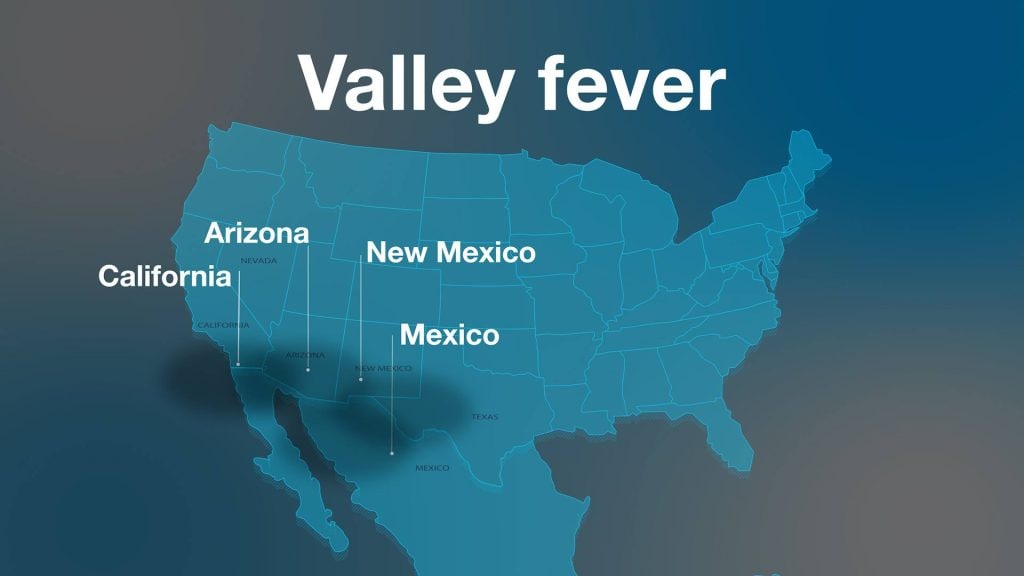Diagnosis
To diagnose valley fever, your healthcare professional looks at your medical history and your symptoms. Valley fever is hard to diagnose based on symptoms because symptoms are often mild and like those of other illnesses. Even on a chest X-ray, valley fever can look much like other lung infections such as pneumonia.
To diagnose valley fever, healthcare professionals may order one or more of the following tests:
- Sputum smear or culture. These tests check a sample of the matter that comes up while coughing, called sputum, for coccidioides organisms.
- Blood tests. A blood test can show antibodies against the fungus that causes valley fever.
Other tests may include:
- Imaging tests. To look for pneumonia from valley fever, you may have imaging tests, such as a CT scan, MRI or chest X-ray.
- Lung biopsy. A healthcare professional takes a sample of lung tissue for study under a microscope.
- Skin test. This may show that you've had valley fever in the past and can't get it again, called immunity.
Treatment
Valley fever most often clears up on its own. Some people need medicines.
Antifungal medicines
A healthcare professional may prescribe an antifungal medicine. This medicine can treat symptoms that don't improve, last a long time or get worse. You also might take this medicine if you're at a higher risk of complications or have infection that lasts, called chronic, or spreads, called disseminated.
The antifungal medicine fluconazole (Diflucan) most often treats all but the most-serious forms of coccidioidomycosis disease. Another treatment is itraconazole (Sporanox, Tolsura).
Antifungal medicines can have serious side effects. Side effects tend to go away once you stop taking the medicine. Side effects of fluconazole and itraconazole may include upset stomach, vomiting and loose stools. Side effects of fluconazole also may include hair loss, dry skin, dry mouth and chapped lips.
An antifungal medicine most often given as a pill may treat more serious infection. These include amphotericin B (Abelcet, Ambisome), voriconazole (Vfend), posaconazole (Noxafil) and isavuconazonium (Cresemba).
For many people, having valley fever once means they can't get it again. But for people with weakened immune systems, the infection may come back. Even if you don't have treatment, your healthcare professional may watch you for complications or relapse for at least a year.
Clinical trials
Explore Mayo Clinic studies testing new treatments, interventions and tests as a means to prevent, detect, treat or manage this condition.
Preparing for your appointment
See your healthcare professional if you get symptoms of valley fever and are in or have just come back from an area where this condition is common.
Here's some information to help you get ready for your appointment.
What you can do
When you make the appointment, ask if there's anything you need to do before you go.
Make a list of:
- Your symptoms, and when they began.
- When you've traveled recently, and where.
- Key medical information, including other conditions you have and any medicines, vitamins or supplements you take, including doses.
- Questions to ask your healthcare professional.
Questions to ask about valley fever might include:
- What's the most likely cause of my symptoms?
- What tests do I need?
- What treatment do you suggest, if any?
- I have these other health conditions. How can I manage these conditions together?
- Am I at risk of long-term complications from this condition?
What to expect from your doctor
Your healthcare professional may ask you questions, including:
- Have your symptoms gotten worse over time?
- Does your work or what you do for fun involve spending time in dusty outdoor places?
- Are you pregnant?


